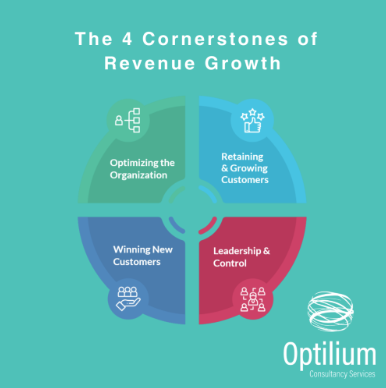The CRO Checklist: Why basics matter!
When I was still in shorts and in my earliest days learning how to sell, I vividly remember the opening session of my first-ever sales training course. The coach asked us to write down on a blackboard (I told you it was a while ago) all the things you should ALWAYS do before you meet a customer. And, secondly, all the things you should NEVER do.
The collective list included the following examples: Always Do – brush your hair, clean your car, plan the journey, and have an agenda. Never Do: park badly in the customer’s car park; arrive late; be impolite to the receptionist.
We looked back at the final list with embarrassment – how obvious is this!? However, our trainer said that if we always abided by these basic rules, we would be operating in the top 5% of salespeople! Because the world is full of people who don’t prepare and who are complacent about the simple stuff. They don’t do the basics.
This message has become more of an epiphany as the years have gone on. As I wander through corporate corridors, I often see CROs glossing over some of the basics in their impatience to tackle challenges in their role. And I’ve seen that with more experience and accumulated skill, there is a risk that complacency sets in. A desire to sprint towards complex issues without walking through the simple foundations that underpin revenue growth.
We can see examples of how the disease of complacency is tackled in other professions. Aircraft captains religiously work through their checklist before taking off (tyre pressures, seat positions, lights etc.).
My favourite example relates to the National Health Service in the UK. The NHS is a behemoth of an organisation made up of multiple entities, trusts and social enterprises. With a primary purpose of improving health and wellbeing, 15 years ago, the leadership body had concerns about the levels of mortality and post-operative complications occurring nationally. Across various trusts and public bodies, there was an abundance of local ‘improvement plans’, but the one outstanding initiative that single-handedly reduced death rates and surgical complications by as much as one-third was…wait for it…a checklist! To be precise, The Surgical Safety Checklist.
The checklist was a simple tool designed to bring together highly qualified surgeons, anaesthetists and nurses in the operating theatre to confirm that critical safety measures are performed. Far from containing complex drug names and medical procedures described in Latin, the document contained such content along the lines: Do we have the right patient on the table? Are we operating on the correct part of the body? Is the machinery on and working properly? You might say, truly back to basics.
The operating theatre is the most common site for adverse surgical incidents, with errors occurring in nearly 15% of all patients globally. Some international studies suggest that surgery may be responsible for up to 1 million deaths every year and an additional 7 million postoperative complications. The tool was officially launched by the World Health Organization (WHO) in June 2008 and has been mandated for use in the UK since 2009
We might reflect on how many ‘surgical incidents’ occur across the front lines of our businesses while we’re busy juggling other seemingly crucial activities. As equivalent highly qualified surgeons, CROs shouldn’t be embarrassed to implement simple tools and processes within critical areas to ensure success. According to The Boston Consulting Group’s Complexity Index, “business complexity has increased sixfold in the past sixty years.” As if that’s not enough, “the number of structures, processes, committees, decision-making forums, and systems has increased by … thirty-five.”
This business fog has become a serious challenge for commercial leaders when trying to focus on the critical job of accelerating revenue growth. I’ve seen CROs responding with the development of equally complex plans and processes, often backed up by a plethora of initiatives. Given the development requirements associated with these richer plans and activities, the impact is often reflected in sluggish pipeline builds and underwhelming sales results.
The checklist for CROs, with their primary responsibility of accelerating revenue growth, should focus on the following four topics:
- Optimizing the Organization
- Retaining and Growing Customers
- Winning New Customers
- Delivering Customer-Centric Leadership

The key is to refocus on the basic priorities and execute them flawlessly. It’s about doing the basics brilliantly. Are you in the top 5% of CROs?
🎯 TAKE THE REVENUE GROW SCORECARD >
🛠️FREE TOOL THIS WEEK – TEAM ROI CALCULATOR
This simple tool, within an Excel spreadsheet, enables you to calculate a set of simple return on investment calculations for a variety of functions (e.g. Sales, Account Management, Marketing, Partners, Management etc.) and total them up into an overall CRO organisation summary. It’s fully adaptable to your own segmentation model and departments.
Need help with the Team ROI Calculator?
Book a 30-minute demonstration call with me!

